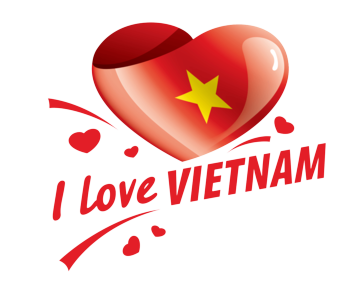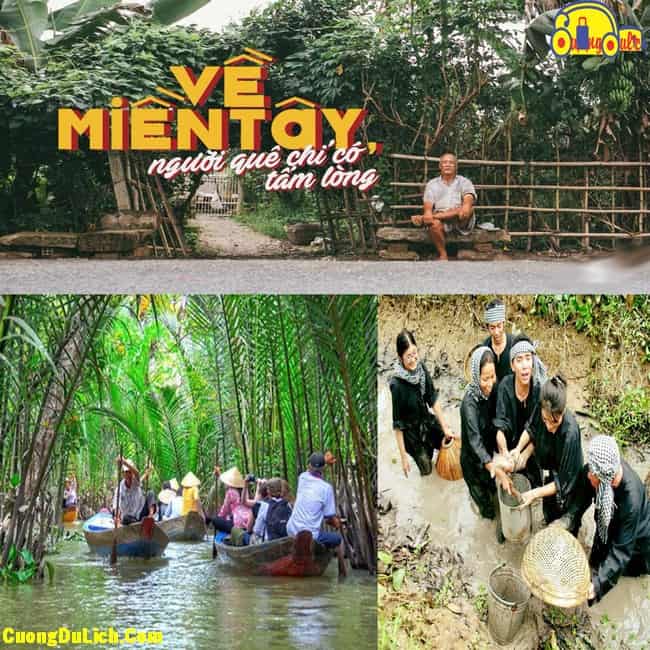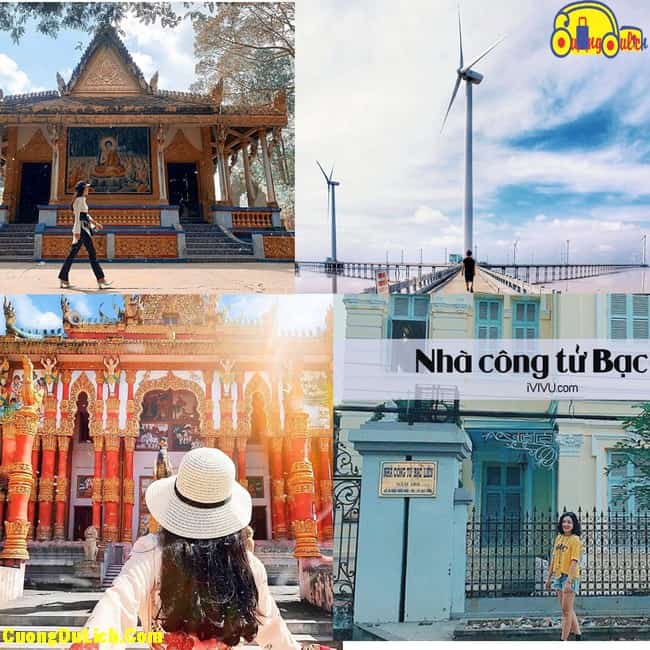When mentioning the western region or traveling to the western region, tourists immediately think of the phrase “the western region of rivers and water.” But in reality, that phrase is only half true. You haven’t fully experienced a proper trip to the western region. If you think I’m wrong about traveling to the western region, then read this entire article and leave a comment below.
Where is the Western Region?
The western region is a concise way to refer to the southern western region. But more accurately, this is the area located at the southernmost part of the country. The mention of many terms related to the Western Region is because this area is located in the West of Gia Dinh (Saigon) today. The Western Region is a vast area covering the entire Mekong Delta region and numerous small islands off the coast.
Which Provinces are in the Western Region?
When researching about the Western Region, you often hear about the seven provinces. Or the programs exploring the nine provinces of the western region. However, these are just programs, plans, or trips. In reality, the Western Region consists of 13 provinces and cities. Specifically, it includes 12 provinces: An Giang, Bac Lieu, Ben Tre, Ca Mau, Dong Thap, Tien Giang, Soc Trang, Long An, Hau Giang, Kien Giang, Tra Vinh, Vinh Long, and one centrally-run city, which is Can Tho.
What Does the Western Region Offer?
As mentioned at the beginning of this article, the Western Region of rivers and water does not fully describe what the Western Region has to offer. The Western Region also has extremely attractive small islands for tourists: Phu Quoc Island, Pirate Islands, Nam Du Islands… Along with that, with a history dating back thousands of years, besides the traditional Vietnamese culture found in other places, the Western Region also has:
- Chinese cultural features: The Chinese came to do business here during the Qing Dynasty
- Cham Pa culture: The Khmer people, or modern-day Cambodians
Therefore, besides the natural resources provided by nature such as seafood, forestry, the Western Region has many temples, relics, and traditional cultural features that cannot be found anywhere else in Vietnam.
How to Travel to the Western Region
How to travel from Saigon to the Western Region?
If you are in Saigon or neighboring provinces in the southeast (Dong Nai, Binh Duong, Binh Phuoc…), there are hundreds of buses from Saigon to various provinces in the Western Region running from 3 am to midnight for you to choose from. You can easily buy tickets to the Western Region at the Western Bus Station in Saigon.
Traveling to the Western Region from northern provinces and the Central Region
Truly, the over 2000km road distance will not be easy if you want to travel by car or train due to the long travel time. However, you can take flights from Hanoi to Saigon, Hanoi to Can Tho, Hanoi to Phu Quoc… and then explore the Western Region. In my opinion, most airports in the northern and central regions have flights to Phu Quoc Airport, Can Tho Airport, and Saigon Airport. Traveling to the Western Region is very easy, right?
When is the Best Time to Visit the Western Region?
The weather in the Western Region is tropical, with distinct wet and dry seasons. The hot and humid temperature throughout the year makes it very suitable for traveling from January to May, and from September to December. The period from July to August is the rainy season, with unpredictable weather. However, in July and August, service prices and airfares are quite cheap. If you have a limited budget, you can consider visiting during this time.
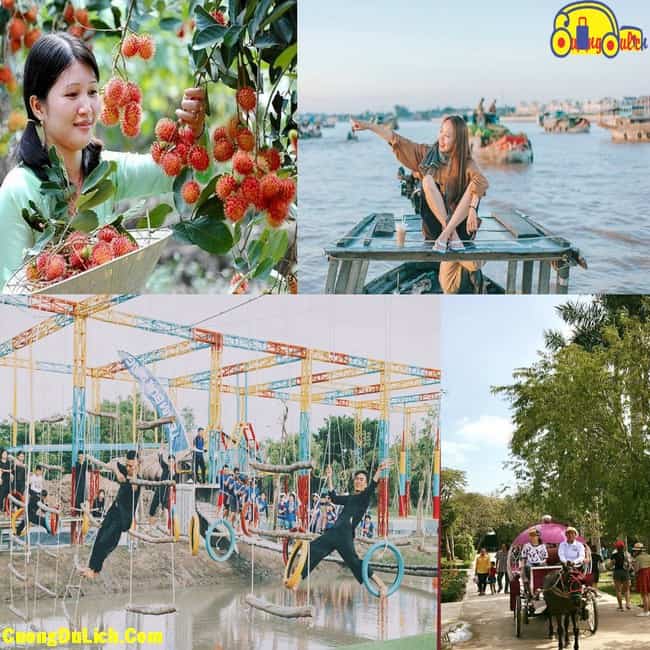
Should you travel to the Mekong Delta independently or on a tour?
As you may know, the Mekong Delta is quite vast and has many attractions. Therefore, when considering whether to travel to the Mekong Delta independently or on a tour, it depends on your requirements and preferences. But in my opinion:
- If you are an office worker, have limited time, or just want to travel on a guided itinerary, then you should go on a tour.
- If you are a group or a company, then taking a tour is always the number one choice to avoid unwanted complications.
- If you truly want to experience and explore all the beauty of the Mekong Delta, then I recommend you to have an independent trip, spend more time, and experience more to discover the wonders of the Mekong Delta.
What to wear when visiting the Mekong Delta
The temperature in the Mekong Delta is relatively comfortable, so you don’t need to bring too many warm clothes like when visiting Sapa or Da Lat. Just bring normal clothes, a jacket to protect from the sun. Since the Mekong Delta has many rivers and water bodies, it’s best to wear clothes made of colored fabric that are easy to wash. Avoid wearing white clothes as they may get dirty and be difficult to clean. If you like, you can choose traditional outfits from the Mekong Delta region such as the “ao ba ba” or “quang co” scarf.
Choose shoes that are easy to walk in, with soft soles and back straps. Especially avoid wearing high heels as it will be difficult to walk on boats, ferries, and bridges.
Carry insect repellents such as mosquito and ant repellents, as these areas are often filled with these types of insects. You may also want to bring a flashlight, a walking stick, and a hammock for easier movement and more comfortable resting. Avoid walking around at night.
Specialty dishes of the Mekong Delta?
In addition to the beautiful tourist destinations in the Mekong Delta, the Mekong Delta is also famous for its unique and diverse cuisine. Therefore, enjoying the delicious dishes in the Mekong Delta is an essential task for any traveler or tourist. The dishes in the southern region always offer different experiences.
Fish noodle soup
In the water-rich areas like the Mekong Delta, fish noodle soup is a popular dish. Each province has its own way of preparing it. You can try the flavors of fish noodle soup in Chau Doc, Kien Giang, Soc Trang, etc.
Grilled snakehead fish
Grilled snakehead fish is a common dish in the Mekong Delta. It is a dish that locals are very familiar with, despite the fact that this fish can be poisonous. The hearty, fragrant, and sweet taste of snakehead fish in a bowl of porridge will make you remember this land of the Mekong Delta forever.
Snakehead fish porridge
Many people know that this fish is poisonous and can cause poisoning, but for the locals here, preparing it has become very familiar. The thick, fragrant, sweet taste of snakehead fish in a bowl of porridge is a flavor that will make you remember this land of the Mekong Delta forever.
Fermented fish hotpot
Fermented fish hotpot has been a long-standing dish in Can Tho and is praised as one of the best dishes in the water-rich Mekong Delta that travelers cannot miss. The main ingredient is made from fermented fish or linh fish in Chau Doc – An Giang, and the hotpot is cooked with coconut water or pork bone broth. You can also enjoy other hotpot varieties such as field crab hotpot, wild goby hotpot, etc.
Banh xeo, banh pia, banh canh, hu tiet are popular and attractive local dishes for tourists, which you can enjoy at street food stalls, sidewalk eateries, or at any local Mekong Delta household. Similarly, broken rice with stewed offal is also very common.
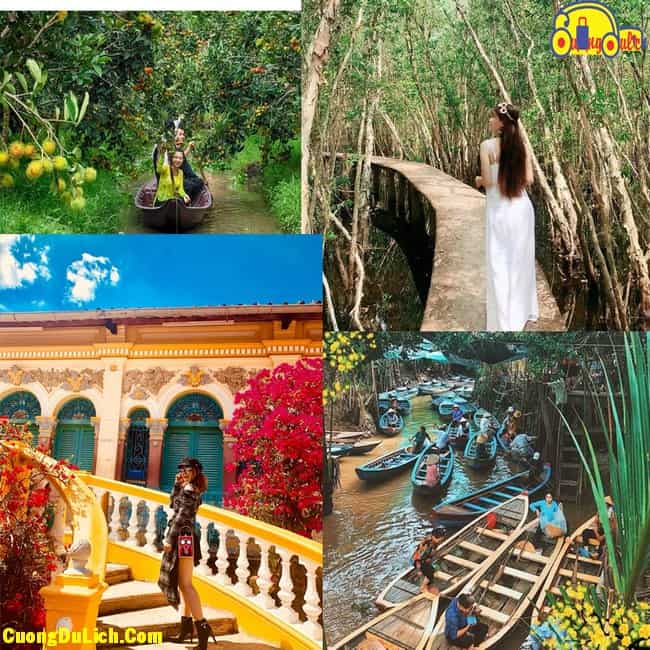
Suggestions for some Mekong Delta travel itineraries
There are many routes and destinations, so I will just give you a brief overview for reference.
Can Tho – An Giang – Soc Trang 4-day travel itinerary
Since I was traveling with elderly parents, I did thorough research before the trip. In the end, I chose to rent a car for flexibility in adjusting the itinerary. I booked a hotel in Can Tho for 3 nightsas we planned to visit An Giang and Soc Trang in separate days.
First day – Can Tho
I booked a cheap evening flight to Can Tho, so we arrived in the evening and just went for dinner, coffee, and shopping at Vincom.
Second day – An Giang
It takes 4 hours to travel from Can Tho to An Giang, and the tourist spots in An Giang are far apart, so I recommend traveling by car for convenience.
- Ta Pa Lake: the water is clear and blue, but the road to the lake is rough and bumpy, luckily we were in a 7-seater car so no one got sick.
- Tram Tra Su Forest: A MUST-VISIT. The staff is very friendly and welcoming. This place is still not fully developed for tourism, so you can truly experience the essence of the Mekong Delta. We had lunch at Ut Thao restaurant in Tram Tra Su Forest. The food was delicious and affordable, and the restaurant within the tourist area was not expensive at all.
Third day – Soc Trang
Chen Kieu Pagoda, Doi Pagoda, Som Rong Pagoda, Tan Hue Vien cake village
These places can be visited quickly, usually done by midday, so you can combine a visit to Bac Lieu.
I returned to the hotel to rest and then went on a boat cruise in Ninh Kieu in the evening
Day 4: Cai Rang Floating Market
In the morning, I woke up early to visit Cai Rang Floating Market, then returned to the hotel and headed to the airport
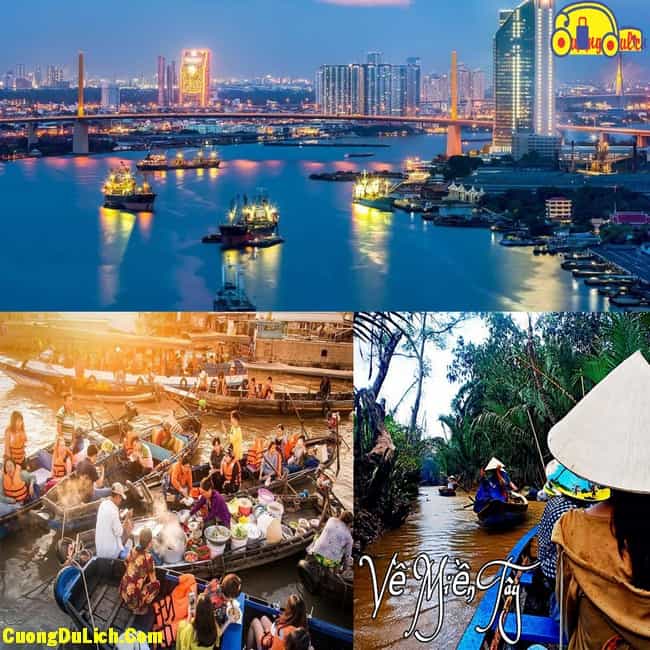
Mekong Delta Travel Itinerary from Saigon by Motorbike 2 Days 1 Night
Total cost for the trip: 800k/person (our group of 8 people)
Transportation: motorbike (average cost per person for fuel round trip -> 140k/bike)
Day 1: Saigon —> Tien Giang, Ben Tre —> Can Tho (Con Phung Thoi Son —> Ninh Kieu Wharf)
Travel: Our group departed from Saigon on National Highway 1A, about 3 hours to Con Phung Thoi Son tourist area in Tien Giang province. Along the way, we stopped at Tan An market for breakfast and coffee (spent 160k) and bought some miscellaneous items (60k).
- 9:30 AM: ECOLOGICAL TOURISM AREA CON PHUNG THOI SON, our group rented a small boat for 500k (includes a guide, horse cart ride, visit to fruit garden + honey farm, rowing three-leaf boat, enjoying traditional music and visiting coconut candy production area)
- 9:45 AM: Parking fee (6k/bike) + personal belongings storage fee (backpacks, luggage), our group tipped the guard 50k for looking after our belongings – the guard informed us about this beforehand.
- 10 AM: The guide gave a brief introduction, and the group boarded the boat to the island (everyone was very excited), the boat ride took about 10-15 minutes
- 10:15 AM: Visited the honey farm, enjoyed complimentary honey tea, the staff introduced various types of honey but we were not obligated to buy
- 10:40 AM: Our group moved to the area where horse carts were waiting
- 10:45 AM: Horse carts took us to the fruit garden area (rowing three-leaf boat, traditional music, coconut candy production). Upon arrival, the guide recommended a coconut pineapple juice stand to our group. Only 15k/glass, very refreshing! We found the price reasonable for a quality drink. Oh, they also had crispy coconut slices to snack on
- 11 AM: Listened to traditional music + ate fruits (Tipped 50k)
- 11:30 AM: Rowed the three-leaf boat. Our group was split into two boats (it’s customary to tip the boatman 10k/person, our group tipped 50k per boat)
- 11:50 AM: Visited the coconut candy production area. Here, everyone could observe the process of making coconut candy and taste samples for free
- 12 PM: CON PHUNG entrance ticket 20k/person. Our group had lunch here, the prices were reasonable and the food was rated 4/5 stars (our group spent 660k including fried elephant ear fish with rice paper rolls, sour soup, assorted vegetables with shrimp paste, braised snakehead fish, a pot of white rice, and 4 bottles of mineral water)
- 12:30 PM: Explored CON PHUNG (climbed the stairway to heaven, crocodile fishing,…)
- 1:15 PM: Returned to the mainland
- 1:30 PM: Our group bid farewell to the guide (Our group had appointed a treasurer, paid 500k/person in advance for easier expense management)
Travel from Tien Giang to Can Tho
- 1:45 PM: Farewell to Tien Giang, Ben Tre —> Can Tho (about a little over 100 km) took about 2.5 hours
- 4:30 PM: Checked into the hotel (our group rented two double rooms, 300k/room, reasonable price, clean and beautiful rooms)
- 6 PM: Had Bun dau mam tom for dinner (95k/tray for 2 people, 15k/glass of sour soup)
- 7 PM: Ninh Kieu Wharf, visited the pedestrian bridge. We also booked a floating market tour for the next day (rented a small boat for 400k, paid a deposit of 200k)
- 8:30 PM: Returned to the hotel, relaxed and slept early for the next day’s journey
Day 2: Can Tho
- 6 AM: Visited Cai Rang floating market: Overall, it was a nice experience, but we were a bit tired from the previous night
- Stopped by a Hu Tieu noodle soup eatery for breakfast. Then visited a mango orchard (30k/person entrance fee). Due to the hangover from the previous night, we didn’t eat much
- 8 AM: Returned to the hotel, checked out, and started the journey back to Saigon
Tourist Attractions in the Mekong Delta
To explore all tourist attractions in the Mekong Delta, it’s impossible to cover them all in one or two articles or pages. Here, I will share with you the main attractions by region and province
Tourist Attractions in Can Tho
Experience a day in Can Tho – the largest and most glamorous city in the Mekong Delta, where many famous tourist destinations attract visitors for sightseeing and experiences, such as Cai Rang and Phong Dien floating markets, Voi Cò Bằng Lăng Ecotourism Area, My Khanh Ecotourism Area, Ninh Kieu Wharf… all are attractive and full of novelty, worth visiting and enjoying your ideal summer days here.
Cai Rang Floating Market: This is perhaps one of the most famous spots in the Mekong Delta, every tourist should visit at least once. The floating market is a distinctive cultural feature of the region with boats and rafts full of fruits. Here, you can buy various fruits at very affordable prices.
Ninh Kieu Wharf: The center of Can Tho city with a variety of entertainment and shopping spots. Every evening, there are boats taking tourists for a scenic river view
Binh Thuy Ancient House
My Khanh Ecotourism Area
Tourist Attractions in Soc Trang
Here, the famous pagoda is suitable for those who love pagodas, with many views for beautiful photos and the opportunity to visit very sacred temples.
Wat Som Rong Pagoda: (Wat Pătum Wôngsa Som Rông)
Locals in Soc Trang often refer to it as Som Rong Pagoda, the Mekong sun spreads across the temple courtyard, creating a peaceful and serene feeling that makes us feel at ease in Buddha’s presence. If you can’t stand the Mekong sun, bring an umbrella, hat, or wear protective clothing, as we often forget to cover up under the sun, right?
Doi Pagoda: (Serây tê chô mahatúp) Mã Tộc Pagoda
Located in Ward 3, Soc Trang City, this is the only temple dedicated to the Buddha Thich Ca, and due to the increasing number of visitors, the bats in the temple have been disturbed and have flown away a lot. There is also a legend of the five-toed pig that the people in Soc Trang are very afraid of this type of pig.
La Han Pagoda
This place is known as the “fairytale castle in the Mekong Delta.” To get here, you have to go through a small alley passing through the Black Bridge neighborhood, it’s quite difficult to find the way, we thought we were lost in someone’s house, right? This road is not accessible by tourist vehicles, but eventually, we found our way to the temple, which looks like a real castle with many scenes. We struggled with the crowded visitors, so we only managed to capture a little scene, right? Half of the temple is under reconstruction, only a small part with the main tower remains.
Ong Bon Pagoda
also known as A Con Pagoda, or Hoa An Assembly Hall – is an ancient temple over 130 years old, located at 09 Nguyen Van Troi Street, Ward 1, Soc Trang City. This is a unique cultural and architectural heritage, a unique sculpture of the Hoa community in Soc Trang.
On the way to Somrong Pagoda, you will pass by Khleang Pagoda, every 5-6 km there is a temple, so you should share Google to find the temple you really like to visit. There are also Chén Kiểu Pagoda, Phật Học Pagoda

Places to visit in Kien Giang
HON SON
A deserted island few people know in the Western sea .The sea area of Kiên Giang province (Western region) has many islands. But the famous ones, almost everyone knows are Phu Quoc and Nam Du. However, this time I will explore and review Hon Son.
Hon Son, also known as Hon Son Rai, belongs to Lai Son commune, Kien Giang province. From Rach Gia port, take a high-speed boat westward, about 60km. The boat ride takes about 1 hour and 30 minutes to reach the port.
Nam Du Island
Phu Quoc Island
Pirate Islands
The Pirate Islands in Kien Giang is the name of an archipelago consisting of 16 islands, the largest of which is Hon Tre (Hon Doc), located in Tien Hai commune, Ha Tien district. This place is about 28 km from Ha Tien coast and 40 km from Phu Quoc Island. Here you will have the opportunity to experience untouched wilderness and explore a diverse and wonderful ecosystem.
Places to visit in Bac Lieu
Ghositaram Pagoda
Also known as Cù Lao Pagoda located in Cù Lao hamlet, Hưng Hội commune, Vĩnh Lợi district, 6 km from the center of Bac Lieu City.
The pagoda of the Khmer people has the largest main hall in Vietnam, the abbot here is 84 85 years old and the abbot is very wise, always with a divine aura. When meeting two people, he would ask where we are from, what we do, if we are dating or married? The abbot is very healthy, asking each visitor’s purpose of visiting, where the kids go to school, and even showing them around, “The pagoda was inaugurated at the beginning of 2019, so come back to visit again” the abbot always says this, so when we go to Bac Lieu, we will definitely visit this place again.
Wind Power Field
This is an experimental site for wind energy in Vietnam. Perhaps because it is the first place with wind turbines, it looks surreal. When you come here, taking pictures will make you feel like you are in the western sky.
Bac Lieu Mansion
Located at 13 Dien Bien Phu, Ward 3, Bac Lieu City. Designed in French style with materials transferred from France, this is considered the most majestic house in Nam Ky province at the beginning of the 20th century, associated with many famous legends.
Bac Lieu also has Mother Nam Hai, Xiêm Cán Pagoda…
Places to visit in An Giang
Everyone says the Mekong Delta is just boats, fields, what’s there to do?Not true! An Giang has many different things:
- Chau Doc Market with a variety of fermented fish, and you must have breakfast with Aunt Le’s fish noodle soup, experience a cyclo ride. Only in Chau Doc.
- Visit Ba Chua Xu Temple and admire the panoramic view of An Giang from the windy Sam Mountain peak.
- Explore the Cham Da Phuoc village – Chau Giang Cham village with traditional brocade weaving. In the remote Mekong Delta, with innocent Cham children, so pure and clear. And they don’t have much contact with smartphones, so they have a lot of time to chat and do activities together, very lovely.Seeing kids playing marbles, adults playing shuttlecock, a mother carrying a baby picking vegetables in the garden… it feels so peaceful…
- Tram Forest Trà Sư with countless rare bird species still remaining, it’s a pity we didn’t come during the flood season so we didn’t see many water lilies.
- Tri Ton: try the burnt chicken at Ô Thum, visit Ta Pa Pagoda rich in Khmer culture and Ta Pa Lake once compared to the “Tuyet Tinh Coc of the Mekong Delta”, also don’t forget to check in at the legendary Thot Not Heart Tree.
What does Long An have to offer?
Long An is a province adjacent to Ho Chi Minh City, so it is quite close for tourists to visit and travel. When visiting Long An, there is a popular eco-tourism area that tourists love to visit, which is Dong Thap Muoi ecological tourism area. This is a well-known eco-tourism area with a pristine and tranquil beauty that nature bestows upon it, making it worth visiting and exploring at least once.
What does Ben Tre have to offer?
Ben Tre is a famous land in the Mekong Delta, known for its lush green coconut groves. Long Lan Quy Phung ecological tourism area is definitely the top destination in this land of Ben Tre.
Places to visit in Ca Mau
The land of Ca Mau cape is the final destination of the Mekong Delta exploration journey. When visiting Ca Mau, tourists will admire the beauty of the cape land, the southernmost point of our country, as well as explore other attractive tourist destinations and enjoy countless delicious and enticing dishes that this place offers, such as Ca Mau three crabs, fried elephant ear fish, grilled snakehead fish, and the most delicious and enticing Mekong Delta fish sauce hotpot…
Hopefully, with the experiences of self-sufficient travel in the Mekong Delta that I have shared with you, your journey to explore this rich alluvial land of the Cuu Long River Delta will be enjoyable. Don’t forget to share your best memories with us.
